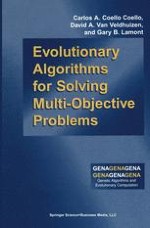Researchers and practitioners alike are increasingly turning to search, op timization, and machine-learning procedures based on natural selection and natural genetics to solve problems across the spectrum of human endeavor. These genetic algorithms and techniques of evolutionary computation are solv ing problems and inventing new hardware and software that rival human designs. The Kluwer Series on Genetic Algorithms and Evolutionary Computation pub lishes research monographs, edited collections, and graduate-level texts in this rapidly growing field. Primary areas of coverage include the theory, implemen tation, and application of genetic algorithms (GAs), evolution strategies (ESs), evolutionary programming (EP), learning classifier systems (LCSs) and other variants of genetic and evolutionary computation (GEC). The series also pub lishes texts in related fields such as artificial life, adaptive behavior, artificial immune systems, agent-based systems, neural computing, fuzzy systems, and quantum computing as long as GEC techniques are part of or inspiration for the system being described. This encyclopedic volume on the use of the algorithms of genetic and evolu tionary computation for the solution of multi-objective problems is a landmark addition to the literature that comes just in the nick of time. Multi-objective evolutionary algorithms (MOEAs) are receiving increasing and unprecedented attention. Researchers and practitioners are finding an irresistible match be tween the popUlation available in most genetic and evolutionary algorithms and the need in multi-objective problems to approximate the Pareto trade-off curve or surface.
